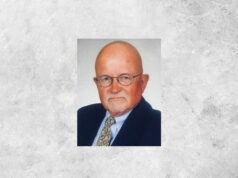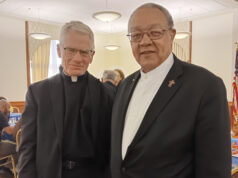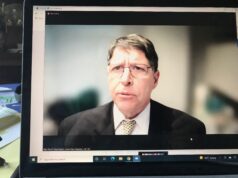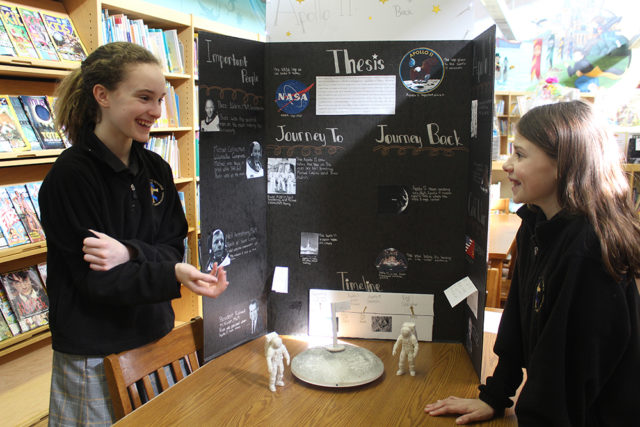
WILMINGTON – A group of sixth- through eighth-graders at St. John the Beloved School have gone above and beyond their regular school work in the name of history.
On a February day, the sixth-graders’ National History Day projects were on display in the school library, a few months ahead of the state competition at Gunning Bedford Middle School. The students educated their classmates – and several adults – about topics that reached as far back as before Christ to as recent as the 1960s.
It was a voluntary endeavor, teacher Ray Costello said, one that he has done for about eight years at different schools. Last year, two St. John’s students advanced to the national competition in Washington, D.C. Research and preliminary work began in the fall.
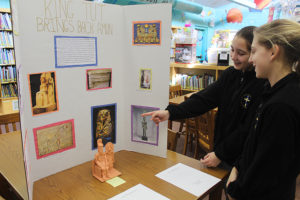
Cameron Aiello and Carrigan Taggart reached the furthest back in history. Their display was about King Tutankhamun and how he restored the god Amun to supremacy.
“We were learning about ancient Egypt in social studies, and something came up about King Tut and bringing back Amun,” Cameron said. “That’s our project. It talks about what the significance was. He didn’t accomplish much while he was ruling, but that was one thing that he did.”
Tut’s father, Akhenaten, had established the worship of Aten, and Tutankhamun reversed that and other changes made during his father’s reign, she said.
Cameron and Carrigan’s display included drawings, facts and a clay model of Tut, which they painted and put on a pedestal.
“We went to our art teacher because we wanted help to make sure it looked OK. We made it out of clay and let it dry for a day,” Carrigan said. “We did 10 fun facts, and we also did a timeline of his life and his father’s life, so you can see all their ruling times.”
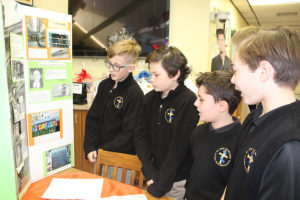
Patrick Tobin was inspired by a family vacation to Ireland for his History Day project. He chose the Easter Rising, an effort by a group of Irish people to end British rule.
“It was basically a revolt by the Irish people. They wanted independence from Britain,” Patrick said.
Easter Rising began on Monday, April 24, 1916, the day after Easter, and lasted for six days. The Irish Volunteers seized locations in Dublin and announced the Irish Republic. Predictably, Britain sent in troops to quell the insurgency, which lasted until April 29. Many leaders and others more marginally involved with the rebellion were executed after court-martials in which they could provide no defense.
During his visit last year, Patrick said he saw many memorials to the Easter Rising, giving him the idea. He is headed to the state competition in May.
“It was fun, but it was a lot of hard work,” he said.
A much more recent event, but still a half century in the past, was the Apollo 11 moon landing, which was covered by Sophia Karch and Ketelyn Rybaltowski.
“We were trying to prove how the Cold War is a major factor of why we made NASA and the Apollo missions,” Sophia said.
She and Katelyn teamed up on the project. Sophia wrote the thesis statement and did the bulk of the writing. Katelyn concentrated on the bibliography and the process papers. The model astronauts that accompanied their display were printed on the school’s 3D printer.
Katelyn said she knew about Neil Armstrong, who was the first astronaut to step foot on the moon.
“But I didn’t know anything about Michael Collins. He stayed in the spaceship hovering the moon while Neil Armstrong and Buzz Aldrin were walking on the moon,” she said.
Costello said the students deserved all the credit for their final products. “It’s 95 percent their work. They came up with their own ideas. I just helped them develop it. It is quite a bit. That’s why we started in September.”
Future participation in National History Day is up in the air at this point for Patrick and the two pairs of young ladies. Carrigan is leaning toward another one.
“I like it. It’s a lot of work, but I’d probably do it again.”





